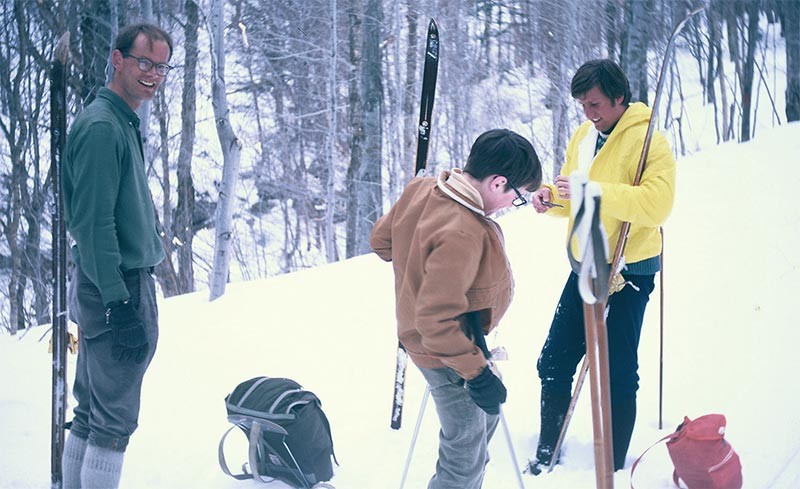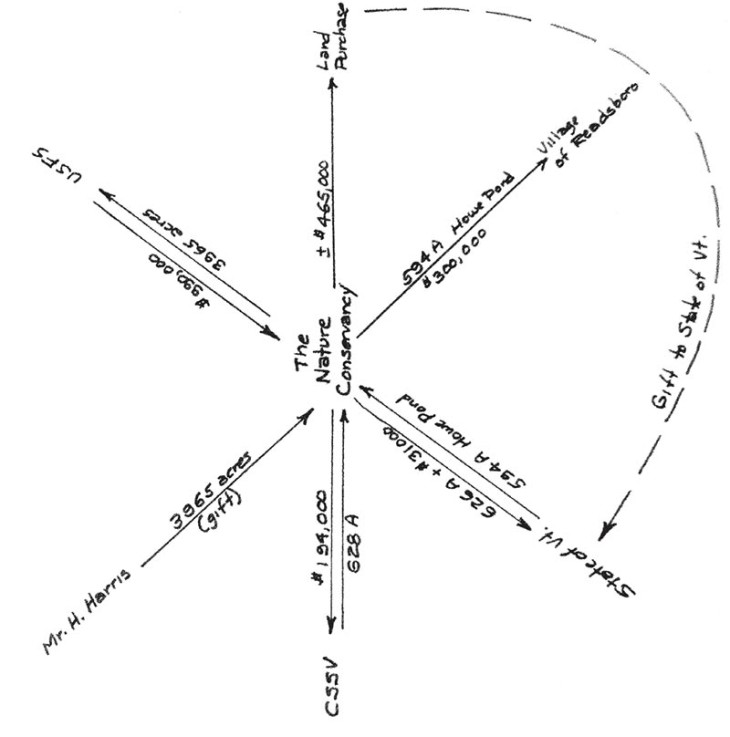
In these days of governmental gridlock, it is difficult to imagine government agencies cooperating to do anything that is even slightly complicated. But it hasn’t always been that way. From 1971 to 1977, as chief of state land management in the Vermont Forest Service, I coordinated the management of all lands within the Agency of Environmental Conservation (now Agency of Natural Resources) and chaired the agency’s Land Acquisition Review Committee.
Each month we received many offers of land, and reviewed each to determine whether it met state goals for land ownership. Many parcels just did not fit, and many were nice but either too expensive or of low priority. One special property was the Burt Lumber Company lands in Stowe and Worcester. This almost 11,000-acre parcel in the Green Mountain range connected two large blocks of State land, and the Burt heirs wished to see it under state ownership and protection. The problem: the state could not afford it.
This was about 1975. Other pending issues at the time included the Town of Readsboro threatening to sue the state over pollution from the state park located on Howe Pond, which doubled as the town’s water supply. At the same time, The Nature Conservancy was being offered a 4,000-acre property in Readsboro, within the Green Mountain National Forest, and was looking to sell that land to the National Forest at fair market value to raise funds for other land acquisition projects in Vermont. And the Conservation Society of Southern Vermont was looking to sell us a 628-acre parcel on the West River in Jamaica and Townsend.
As chief, I was aware of the pending lawsuit and other potential land transfers being discussed around the state, and it occurred to me that all of them could be pulled together for mutual benefit. If The Nature Conservancy acquired the 4000-acre Harris property and sold it to the National Forest, they’d have a sizeable amount of cash that could be used to fund other projects in Vermont. If they bought the land on West River, it could potentially be exchanged with the state for the Howe Pond State Park land, which could then be given to the town of Readsboro; this would stop the litigation, satisfy Readsboro, eliminate administrative hassles with closing the park, add desirable land to state ownership on the West River, and leave The Nature Conservancy with enough cash to invest in the Burt property in Stowe.
After some head scratching, I came up with a plan shown in the flow chart that accompanies this article. The late James E. (Jim) Wilkinson, commissioner of the Department of Forests and Parks, dubbed it the “Rube Goldberg Land Exchange”; most others considered it mission impossible – they said it couldn’t be done. With Jim’s prodding and help from Governor Thomas Salmon’s office, we put together some informal meetings between representatives from all the parties involved. In a non-binding agreement dated July 25, 1977, we laid out the following steps:
The Nature Conservancy would accept a gift of nearly 4,000 acres of land from Mr. Henry F. Harris and hold it for sale to the Green Mountain National Forest. When the funds were secure, they would acquire Conservation Society of Southern Vermont lands (628 acres) along the West River and exchange it with Vermont Forest and Parks for the Howe Pond State Park (594 acres), at which point they would transfer Howe Pond State Park to the Town of Readsboro for a municipal forest and watershed, plus $300,000 to compensate the Town for tax income lost from transfer of the Harris property to public ownership. The Town of Readsboro would drop pending litigation against the State of Vermont.
This process, begun under Governor Salmon and concluded under his successor, Governor Richard Snelling, required the approval of the US Forest Service, the Vermont Department of Forests and Parks, the selectmen and bailiffs of the Town of Readsboro, the trustees of the Conservation Society of Southern Vermont, both governors, the Vermont Legislature, and The Nature Conservancy. This first stage was completed in December 1977. Although I had concocted this mess, I left Forest and Parks in August of 1977 and was not around to even see this first step come to fruition. I simply made the spit-balls for somebody else to throw.
My last act was having the Burt property appraised and turning that appraisal over to The Nature Conservancy. In December 1977, The Nature Conservancy purchased the Burt property and held it until the state could raise the money to purchase it. It took a few years, but on October 29, 1979, 10,853 acres were transferred to the state, which added 970 acres to Camel’s Hump State Forest, 6,092 to the Mt. Mansfield State Forest (west of Stowe) and 3,791 to the Putnam State Forest in the Worcester Range (east of Stowe). The property, which appraised at $2,135,000, was sold to the state for $1,575,000, funded with $1,185,000 from the federal Land and Water Conservation Fund, $425,000 from state matching funds, and $760,000 from The Nature Conservancy, which included about $100,000 raised by 250 businesses and individuals under the leadership of well-known resort owner Johannes von Trapp.
The success of this complicated endeavor shows what can be done when government and private partners get creative in the name of land stewardship. And there ended up being one more deal attached to the chain: after selling several outlying parcels of Burt lands best suited for development, The Nature Conservancy used the money to purchase an additional 350 acres of forestland to add to the White Mountain National Forest in New Hampshire.


